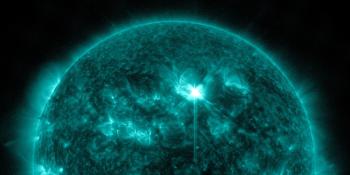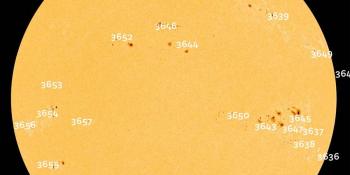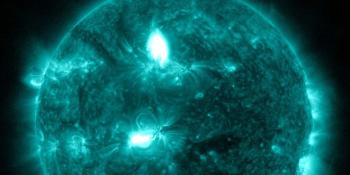Viewing archive of Monday, 26 November 2012
Solar activity report
Any mentioned solar flare in this report has a scaling factor applied by the Space Weather Prediction Center (SWPC). Because of the SWPC scaling factor, solar flares are reported as 42% smaller than for the science quality data. The scaling factor has been removed from our archived solar flare data to reflect the true physical units.
Report of Solar-Geophysical Activity 2012 Nov 26 2200 UTCPrepared by the NOAA © SWPC and processed by SpaceWeatherLive.com
Joint USAF/NOAA Report of Solar and Geophysical Activity
SDF Number 331 Issued at 2200Z on 26 Nov 2012IA. Analysis of Solar Active Regions and Activity from 25-2100Z to 26-2100Z Solar activity has been at low levels for the past 24 hours.
The largest solar event of the period was a C2 event observed at
26/1526Z from Region 1620 (S13W28). The region grew significantly
overnight and is now considered an Esi-type region with a beta-gamma
magnetic configuration. Region 1618 (N08W69) continued to decay,
however, it maintained a weak delta in its trailing spot. There are
currently 4 numbered sunspot regions on the disk. A filament eruption
was observed south of Region 1620 in SDO/AIA 304 imagery beginning at
26/0343Z. A model run is in progress to determine geoeffectiveness.
IB. Solar Activity Forecast
Solar activity is expected to be at low to
moderate levels on days one, two, and three (27 Nov, 28 Nov, 29 Nov).
IIA. Geophysical Activity Summary 25-2100Z to 26-2100Z
The geomagnetic
field has been at quiet to unsettled levels for the past 24 hours. A
shock passage was observed at 26/0437Z indicating the possible early
arrival of the 23 November CME followed by an 8 nT Sudden Impulse (SI)
observed at the Boulder magnetometer at 26/0514Z. Solar wind speed, as
measured by the ACE spacecraft, reached a peak speed of 558 km/s at
26/0709Z. Total IMF reached 12.8 nT at 26/0749Z. The maximum southward
component of Bz reached -7.8 nT at 26/0729Z although it has remained
positive since about 26/1000Z.
IIB. Geophysical Activity Forecast
The geomagnetic field is expected
to be at quiet to unsettled levels with a chance for isolated active
periods on day one (27 Nov) as CME effects begin to wane. Mostly quiet
conditions are expected on days two and three (28 Nov, 29 Nov).
III. Event Probabilities 27 Nov to 29 Nov
| Class M | 35% | 35% | 35% |
| Class X | 05% | 05% | 05% |
| Proton | 01% | 01% | 01% |
| PCAF | green | ||
IV. Penticton 10.7 cm Flux
Observed 26 Nov 122 Predicted 27 Nov-29 Nov 120/120/115 90 Day Mean 26 Nov 123
V. Geomagnetic A Indices
Observed Afr/Ap 25 Nov 004/004 Estimated Afr/Ap 26 Nov 005/005 Predicted Afr/Ap 27 Nov-29 Nov 011/012-006/005-006/005
VI. Geomagnetic Activity Probabilities 27 Nov to 29 Nov
| A. Middle Latitudes | |||
|---|---|---|---|
| Active | 25% | 10% | 05% |
| Minor storm | 10% | 05% | 01% |
| Major-severe storm | 01% | 01% | 01% |
| B. High Latitudes | |||
|---|---|---|---|
| Active | 15% | 15% | 15% |
| Minor storm | 25% | 15% | 10% |
| Major-severe storm | 35% | 15% | 05% |
Latest news
Latest forum messages
AR3663 149AR3664 14Unproven theories 383Weakening of Earths magnetic field due to geomagnetic excursion 10CME 2024-MAY-01 south of AR3654 C5.8 6
More topicsSupport SpaceWeatherLive.com!
A lot of people come to SpaceWeatherLive to follow the Sun's activity or if there is aurora to be seen, but with more traffic comes higher server costs. Consider a donation if you enjoy SpaceWeatherLive so we can keep the website online!

Space weather facts
| Last X-flare | 2024/05/05 | X1.2 |
| Last M-flare | 2024/05/05 | M7.3 |
| Last geomagnetic storm | 2024/05/02 | Kp7- (G3) |
| Spotless days | |
|---|---|
| Last spotless day | 2022/06/08 |
| Monthly mean Sunspot Number | |
|---|---|
| April 2024 | 136.5 +31.6 |
| Last 30 days | 153.8 +59.7 |


